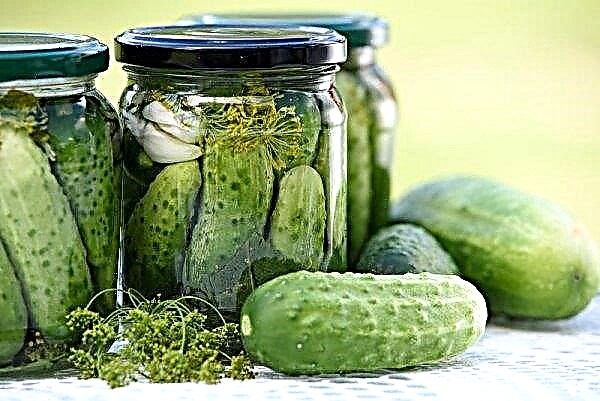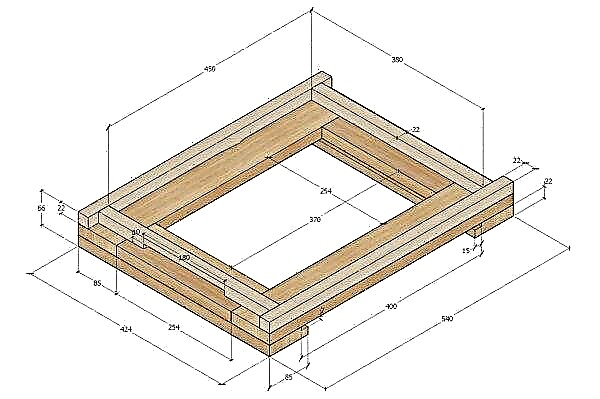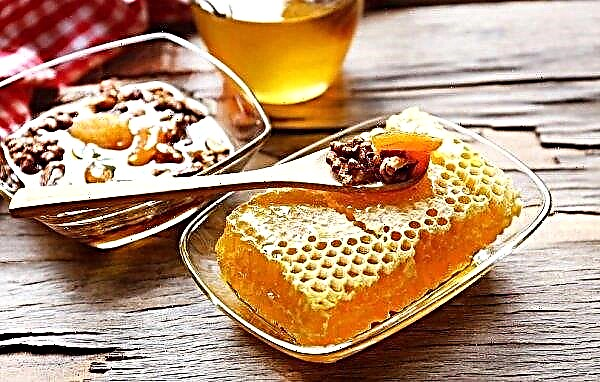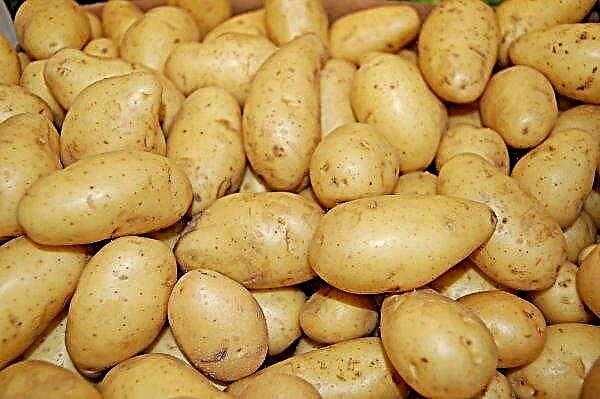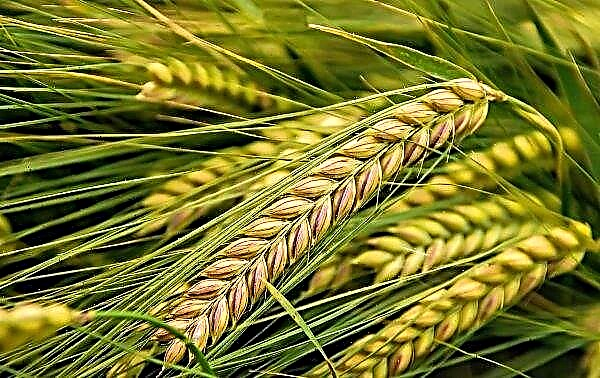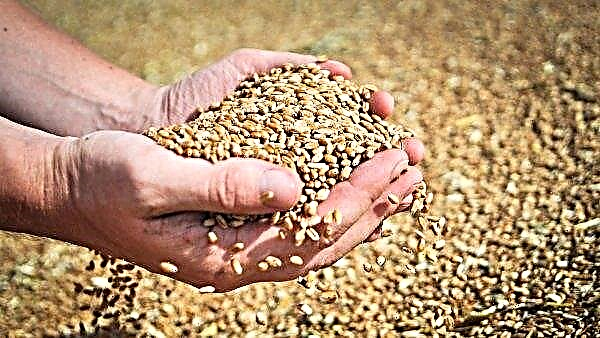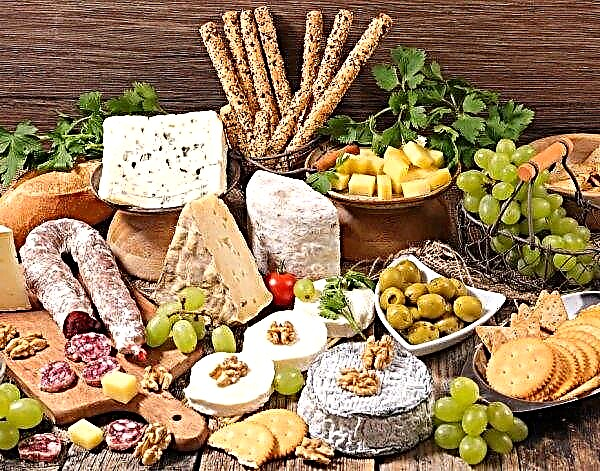In order to successfully grow poultry, they must be kept in the right conditions. When keeping chickens, they must have a place for walking. Today, more and more often aviaries are developing for them, in which they can live in the warm season or walk year-round. You will learn about the advantages and disadvantages of such designs, as well as how to make them with your own hands, from this article.
Why do we need an aviary?
Breeding chickens is a profitable and at the same time fascinating activity. In order for the birds to be comfortable, and their owner could easily look after them, they need to be kept in convenient conditions. One of the options for keeping domestic birds is an aviary.
Did you know? It is generally accepted that chickens have a very small brain and low mental abilities. However, in the process of research, it was possible to prove that these birds are able to remember about 100 people and easily distinguish their owner from them, navigate in time and recognize neighbors in the chicken coop.
This stationary or lightweight portable design performs several functions:
- Protects chickens from precipitation and adverse weather conditions on a walk.
- It ensures the safety of layers, protecting them from rodents, predatory animals and birds.
- It provides optimal conditions for keeping, including constant access to fresh air for the normal development of birds.
- Simplifies the care of birds.
- Provides comfortable living conditions for birds.
- Prevents free movement of chickens in the area, which could harm valuable plants or buildings.
- It performs a decorative function, beautifully fitting into the arrangement of the courtyard.
 The main advantages of the design are free-range birds, their long stay in the fresh air and under sunlight, which contributes to their health and better development. The main disadvantage is contact with wildlife, which threatens the development of diseases.
The main advantages of the design are free-range birds, their long stay in the fresh air and under sunlight, which contributes to their health and better development. The main disadvantage is contact with wildlife, which threatens the development of diseases.Types of Aviaries
An aviary is a frame made of wood or metal, on which a mesh is stretched. The shape of the frame is different: rectangular, square, pyramidal. The same goes for sizes. This can be very small buildings, designed for 10 layers, or large barriers for a large number of birds.
The design can have a floor, a roof, a foundation, a vestibule and look like a fully equipped open chicken coop, represent a large cage or a section of the yard with a canopy fenced with a grid. It can also be just a walking place attached to a chicken coop or other capital building. They are terrestrial, i.e. installed directly on the ground, or suspended - arranged on supports at some distance from the soil.
Aviaries for chickens can be divided into 2 main types:
- Stationary.
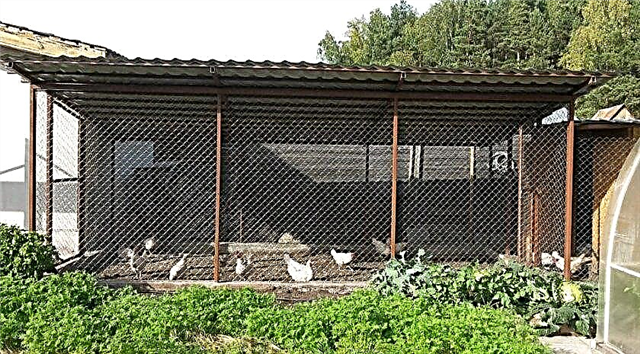
- Mobile.
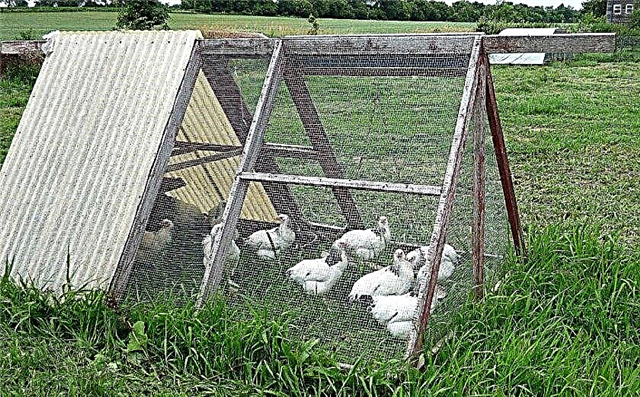
Stationary
In this embodiment, birds can be kept throughout the year. Everything is equipped in it for their full-fledged living - feeders, drinking bowls, perches, nests. This building is made thoroughly, with a roof and a solid foundation. It can be equipped with heating, lighting and other utilities, insulated for keeping birds in the winter. It is impossible to move it to another place.
Important! When keeping chickens in the enclosure, the recommended keeping standards should be adhered to - no more than 4 adult birds per 1 m².
Mobile
Mobile structures differ from stationary ones, first of all, in smaller sizes and in that they are made of lightweight materials. The smallest and lightest options can be moved manually. They are called portable. Larger equip the wheels in order to make it convenient to transport. Such designs are suitable for keeping a small number of birds in the warm season. The choice of the type of construction should be done based on the goals of breeding poultry, their breed and the number of heads.
How to build a do-it-yourself stationary aviary for chickens?
Any kind of aviary can be made with your own hands, carefully thought out the shape, having calculated the necessary materials and size. Consider the technology of building a stationary structure placed on supports. If the stationary paddock is attached to the chicken coop, then the canopy in it is optional, since the birds will hide from the weather and the sun in their home.
Important! To locate a stationary aviary, it is necessary to choose a well-lit place on the site, densely covered with grass, placed on a small hill away from the roadway and drafts.
In order for them to hide from the sun during the day, you can plant tall plants near the aviary. If a cage with a canopy is planned, it is better to take the supports not wooden, but metal, which can withstand the weight of any material used under the roof.
Necessary materials
For the construction of a stationary structure, the following tools and materials will be required:
- wood beam (50 × 50 mm) - 4 pcs.;
- long wooden boards - 4 pcs.;
- short wooden boards - 4 pcs.;
- short nails;
- Boer;
- metal wire;
- mesh netting (reinforcing mesh or garden plastic) with a mesh size of 0.5 cm;
- corners made of metal;
- paint;
- antiseptic.

Step-by-step instruction
To build a stationary structure, you will need to draw a project in which to designate all the details and dimensions.
Next, you need to perform the following steps:
- Nail the beams to the supporting wall to the width and height of the aviary.
- Make recesses in the soil under the frame supports with a depth of 0.5–1 m at the previously marked design corners.
- Vertically install wooden bars, previously treated from rotting, in the recesses and securely fix them with poured soil, gravel, sand. For layers, the height of the supports and aviary should be at least 2 m, for broilers - 1.8 m.
- Nail the boards along the length and width.
- Pull the net over the frame and attach it to the boards on the supporting wall, securing it with wire. It is important to fix it with an overlap so that there are no gaps. The ends of the mesh also wire.
- Attach a canopy to the supports. It can close the aviary completely or only half.
- To equip the internal space with feeders, drinking bowls, spools, nests, perches, ash baths.
Video: do-it-yourself paddock for chickens
Making a mobile paddock
To build a mobile structure will require less time and materials, which means that it will cost less than a stationary aviary.
Necessary materials
To build a mobile aviary, you need to take care of the purchase of the following materials:
- strong boards with a section of 30 × 100 mm;
- moisture resistant plywood 18 mm thick;
- bars with a cross section of 20 × 40 mm;
- galvanized wire mesh;
- screws and nails;
- construction stapler;
- carpentry tool.
Did you know? On the walls of the tomb of Tutankhamun posted drawings indicating that in those days already contained domestic hens. They are attributed to 1350 BC. e.
Step-by-step instruction
To build a mobile corral, you must use the following instructions:
- Take 3 boards 24.38 cm long and 3 boards 16.26 cm long and make a side wall from them.
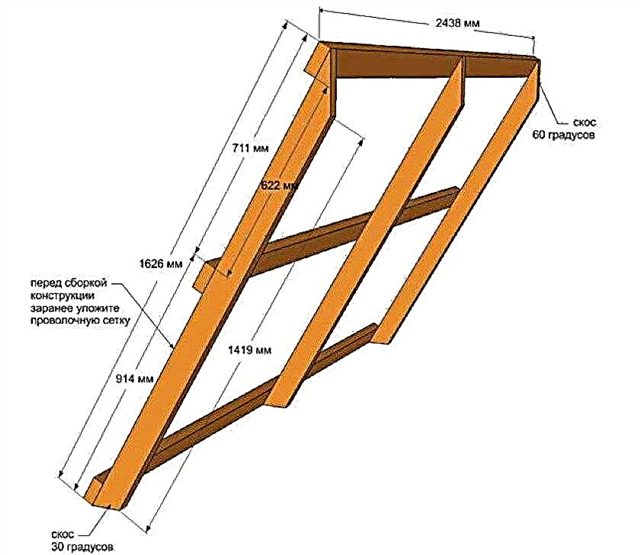
- Make the second wall on the same principle.
- Cut the ends of the short boards from above at an angle of 60 °, from below - at an angle of 40 °.
- Tighten the mesh and secure it with a stapler.
- Connect the side walls in the form of a house, screwing them on top with self-tapping screws, and fixing them on 2 crossbars from below. Cut the ends of the cross members at an angle of 30 °.
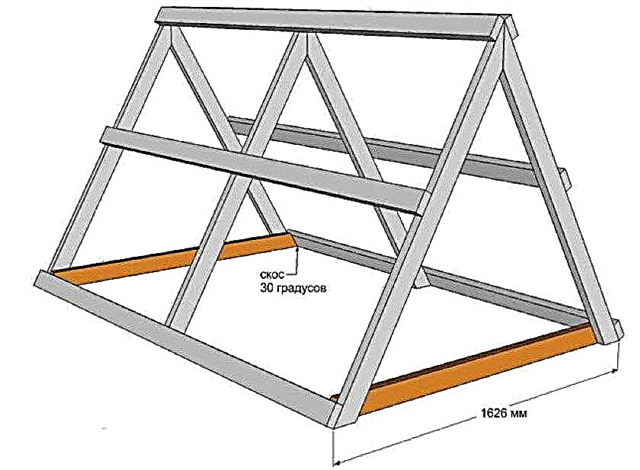
- Between the side walls, in the center of the frame, fill the spacers with a pitch of 3.37 cm. Cut the ends of the spacers at an angle of 30 °.
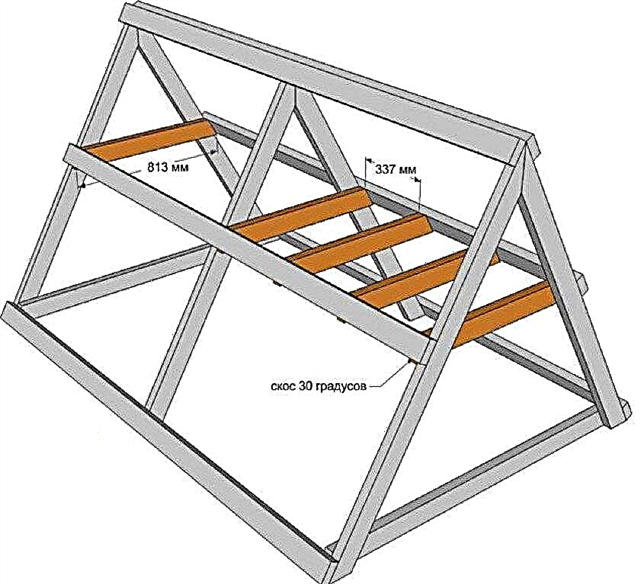
- Sheathe the upper part of the frame with plywood.
- Beat the skate with wooden planks.
- Cover the ends with a mesh.
- Fill wood strips over the net.
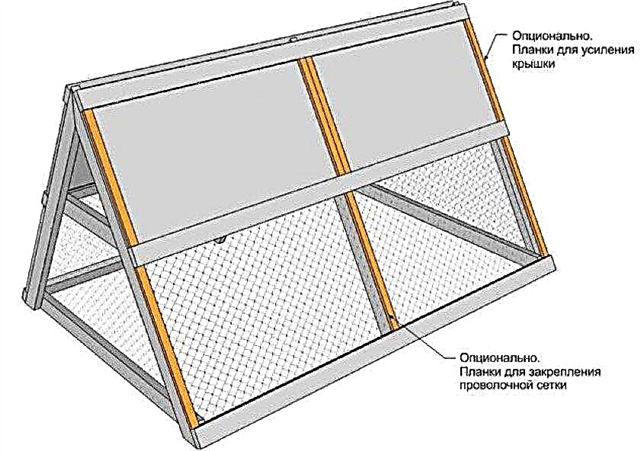
Aviary Care Features
Care for a mobile structure without a floor is only to control the reliability and safety of the structure. There should not be traumatic areas, holes where other birds and animals can enter or from which chickens can run out.
Stationary structures with floors and foundations must be regularly cleaned of residues of feed, excrement, and disinfected. It is advisable to lay a bed of sawdust and sand on the floor, which must be replaced in a timely manner.
Did you know? The Guinness Book of Records contains a record of a Leghorn chicken, which in 1956 laid an egg weighing 454 g. Ordinary laying hens lay eggs weighing 60–70 g.
An aviary for chickens is a necessary building for comfortable keeping of birds, which performs several functions. It can be built independently or purchased in finished form. When choosing a design, one should focus on the number of livestock, the size of the site, the seasonality of bird keeping, personal preferences and opportunities.







